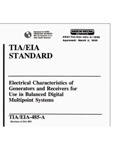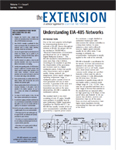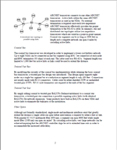 Video Library: EIA-485
Video Library: EIA-485
Contemporary Controls has produced an released various videos in order to help users understand what EIA-485 is and how it works. The series "Understanding EIA-485 Networks" is a five part series which aims to give the viewer a geneal understanding of various aspects of technologies that use EIA-485.
 The Extension: Understanding EIA-485 Networks
The Extension: Understanding EIA-485 Networks
One of the more popular technologies for interconnecting devices on a network is EIA-485. Known throughout industry as RS-485, the porper title for the standard is TIA/EIA-485-A "Electrical Characteristics of Generators and Receivers for Useing Balanced Digital Multipoint Systems." The EIA-485 standard is misunderstood to mean more than what it defines. According to the standard it specifies the characteristics of the generators and receivers used in a digital multipoint system. It does not specify other c haracteristics such as signal quality, timing, protocol, pin assignments, power supply voltages or operating temperature range. A multipoint system consists of two or more generators and one or more receivers. A generator is the same as a transmitter ad since two or more transmitters can exist on the same electriacl bus, EIA-485 is suitable for multimaster systems.
 ARCNET's Already Flexible Physical Layer Enhanced with Several EIA-485 Variants
ARCNET's Already Flexible Physical Layer Enhanced with Several EIA-485 Variants
ARCNET is regarded as one of the most flexible industrial networking technologies to wire due to the many cabling options available to the user. ARCNET can be configured as a star network using hubs or a bus without hubs. Cabling can be coaxial, twisted-pair or fiber optics. With the proper selection of hubs, repeaters and links, cabling and topology can be mixed to a distance of four miles. Now with new ARCNET controller chips, simplified interfacing to the popular EIA-485 multipoint networking standard is possible providing the user with more options. This paper describes the tradeoffs in implementing DC coupled, AC coupled and optically coupled EIA-485 ARCNET networks.

